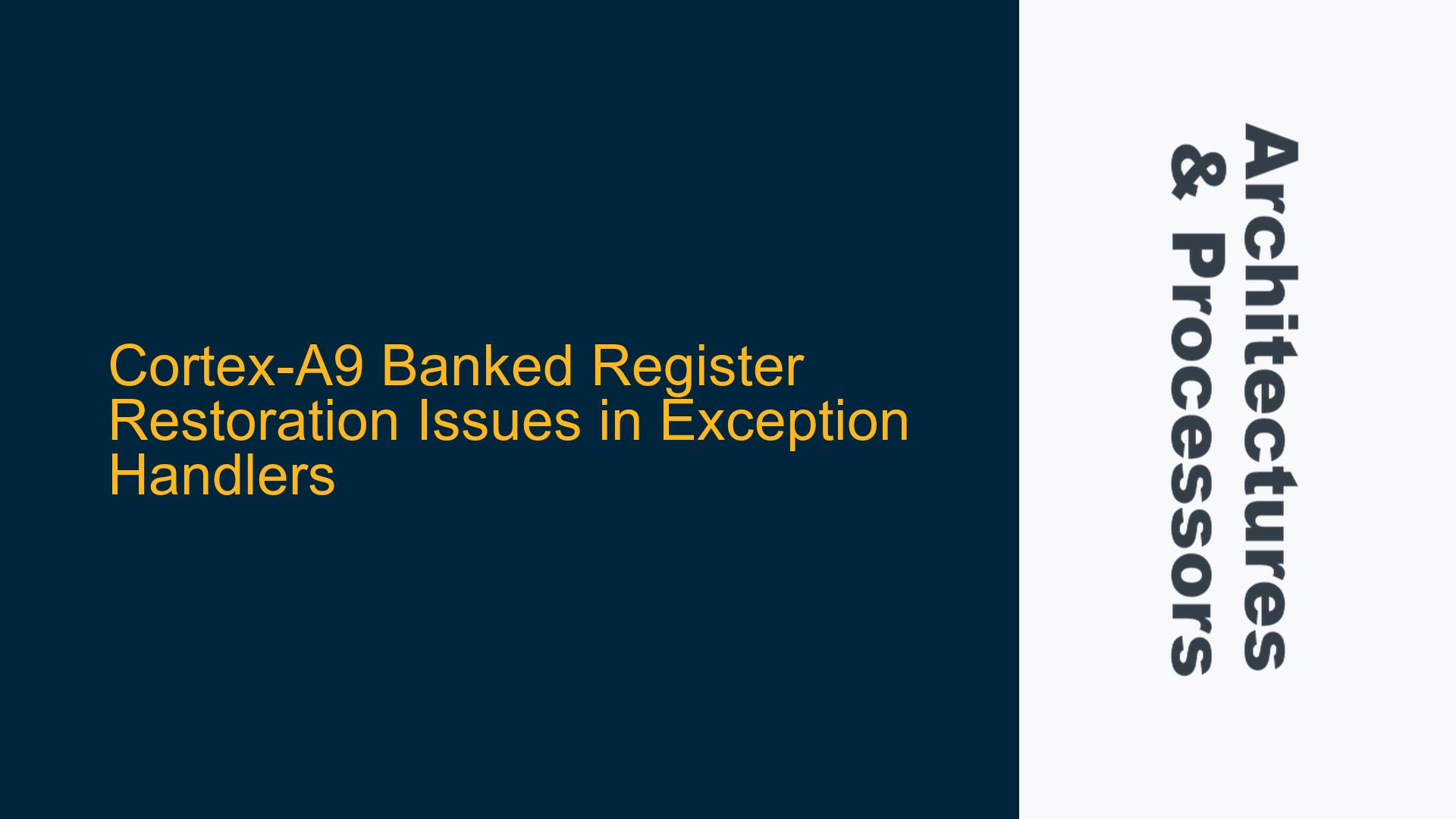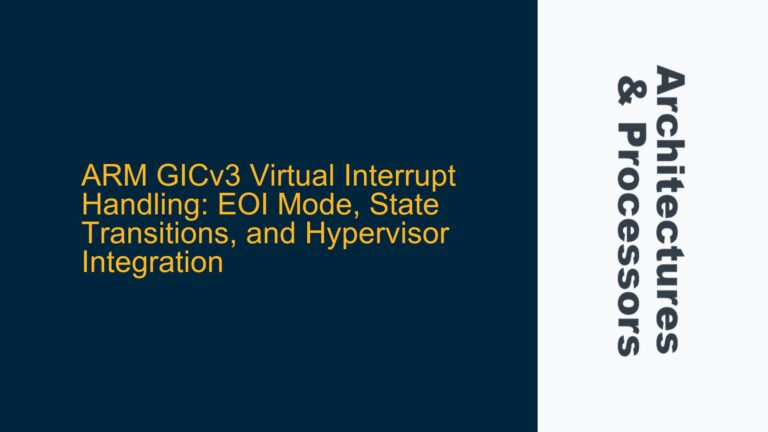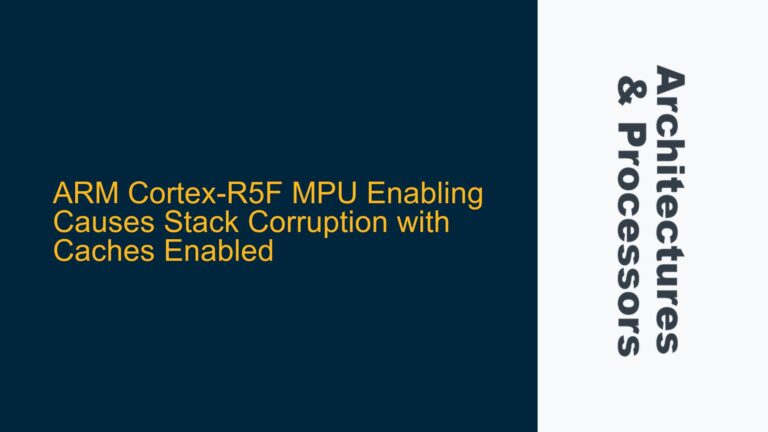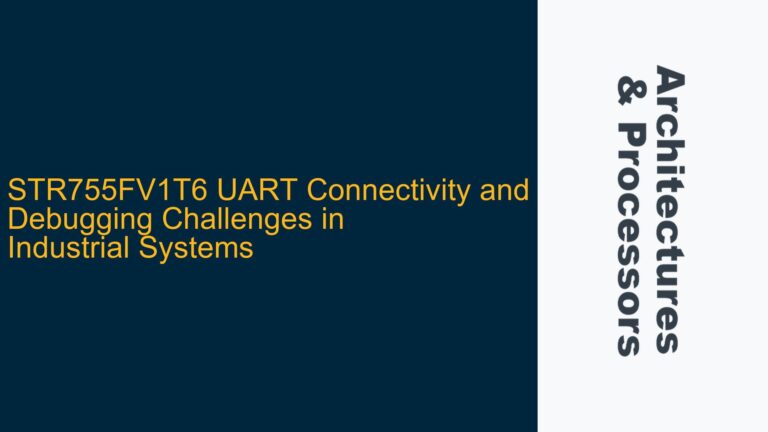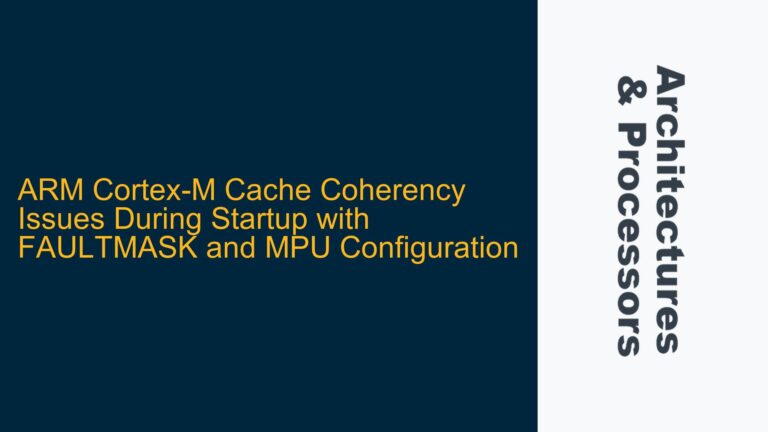ARM Cortex-A9 Banked Register Restoration Challenges During Context Switching
When working with the ARM Cortex-A9 processor, particularly in the context of real-time operating systems (RTOS) and exception handling, developers often encounter challenges related to the restoration of banked registers during context switching. The Cortex-A9, like other ARM processors, employs a banked register scheme to optimize exception handling by providing separate copies of certain registers for different processor modes (e.g., User, SVC, IRQ, FIQ). This architecture ensures that the processor state is preserved across mode transitions, but it also introduces complexity when restoring the user-mode context from a privileged exception state.
The issue at hand involves the use of the Load Multiple (LDM) instruction with the caret (^) modifier, which is intended to force the instruction to operate on the user-mode registers rather than the banked registers of the current privileged mode. In the provided scenario, the developer attempts to restore the user-mode stack pointer (SP), link register (LR), and program counter (PC) using the LDM instruction with the caret modifier. However, the restoration fails, and the user-mode SP and LR are not correctly restored. This behavior is unexpected, as the caret modifier should theoretically ensure that the user-mode registers are accessed.
The developer then resorts to an alternative approach, which involves manually adjusting the base register (R0) and performing a series of load and move operations to restore the user-mode context. This workaround successfully restores the user-mode SP and LR, but it raises questions about why the initial approach using the LDM instruction with the caret modifier did not work as expected. Understanding the root cause of this issue requires a deep dive into the ARM architecture, the behavior of banked registers, and the specific nuances of the LDM instruction in different processor modes.
Misuse of the LDM Instruction with the Caret Modifier in Privileged Modes
The primary cause of the issue lies in the misuse of the LDM instruction with the caret (^) modifier in privileged exception modes. The caret modifier is designed to force the LDM instruction to operate on the user-mode registers when executed in a privileged mode. However, there are specific restrictions and nuances associated with its use that can lead to unexpected behavior if not properly understood.
In the ARM architecture, the LDM instruction with the caret modifier has different semantics depending on the registers being loaded and the current processor mode. When the instruction is used to load the program counter (PC), the caret modifier also forces a mode switch to the user mode. This behavior is intended to facilitate the return from an exception handler to user-mode execution. However, when the instruction is used to load other registers, such as the stack pointer (SP) and link register (LR), the caret modifier does not force a mode switch. Instead, it simply ensures that the user-mode versions of these registers are accessed.
In the provided scenario, the developer attempts to use the LDM instruction with the caret modifier to load multiple registers, including the SP, LR, and PC. The expectation is that the caret modifier will ensure that the user-mode versions of these registers are restored. However, the instruction fails to restore the user-mode SP and LR correctly. This failure can be attributed to the fact that the LDM instruction with the caret modifier does not handle the restoration of the user-mode SP and LR in the same way as it handles the restoration of the PC. Specifically, the caret modifier does not force a mode switch when loading the SP and LR, which means that the banked versions of these registers in the current privileged mode are accessed instead of the user-mode versions.
Additionally, the use of the caret modifier with the LDM instruction in privileged modes can lead to unpredictable behavior if the instruction is not used in the correct context. For example, if the instruction is used in a mode that does not have banked registers for the SP and LR, the caret modifier may have no effect, and the instruction may behave as if the caret modifier were not present. This can result in the incorrect restoration of the user-mode context, as observed in the provided scenario.
Correcting Banked Register Restoration with SRSDB and RFEIA Instructions
To address the issue of incorrect banked register restoration during context switching, developers should consider using the Store Return State and Decrement Before (SRSDB) and Return From Exception with Increment After (RFEIA) instructions. These instructions are specifically designed to handle the saving and restoration of the processor state during exception handling and context switching, and they provide a more reliable and predictable mechanism for managing banked registers.
The SRSDB instruction is used to store the return state (including the return address and processor mode) onto the stack in a format that can be later restored using the RFEIA instruction. The SRSDB instruction automatically handles the saving of the return address and processor mode, ensuring that the correct state is preserved across mode transitions. This instruction is particularly useful in exception handlers, where the processor state needs to be saved before entering the handler and restored after the handler completes.
The RFEIA instruction is used to restore the processor state from the stack and return from an exception. This instruction automatically restores the return address and processor mode, ensuring that the correct state is restored and that the processor returns to the appropriate mode of execution. The RFEIA instruction is designed to work in conjunction with the SRSDB instruction, providing a seamless mechanism for handling exceptions and context switching.
In the context of the provided scenario, the developer can replace the problematic LDM instruction with the SRSDB and RFEIA instructions to ensure that the user-mode context is correctly restored. The SRSDB instruction can be used to save the return state before entering the exception handler, and the RFEIA instruction can be used to restore the return state and return from the exception handler. This approach eliminates the need for manual manipulation of the base register and ensures that the user-mode SP and LR are correctly restored.
To implement this solution, the developer should modify the exception handler to use the SRSDB instruction to save the return state onto the stack before entering the handler. The handler can then perform the necessary operations to restore the user-mode context, using the RFEIA instruction to restore the return state and return from the exception. This approach provides a more robust and reliable mechanism for handling exceptions and context switching, and it avoids the pitfalls associated with the misuse of the LDM instruction with the caret modifier.
In summary, the issue of incorrect banked register restoration during context switching in the ARM Cortex-A9 processor can be attributed to the misuse of the LDM instruction with the caret modifier in privileged modes. The caret modifier does not handle the restoration of the user-mode SP and LR in the same way as it handles the restoration of the PC, leading to unexpected behavior. To address this issue, developers should use the SRSDB and RFEIA instructions, which are specifically designed for handling exception handling and context switching. These instructions provide a more reliable and predictable mechanism for managing banked registers, ensuring that the user-mode context is correctly restored during exception handling and context switching.
